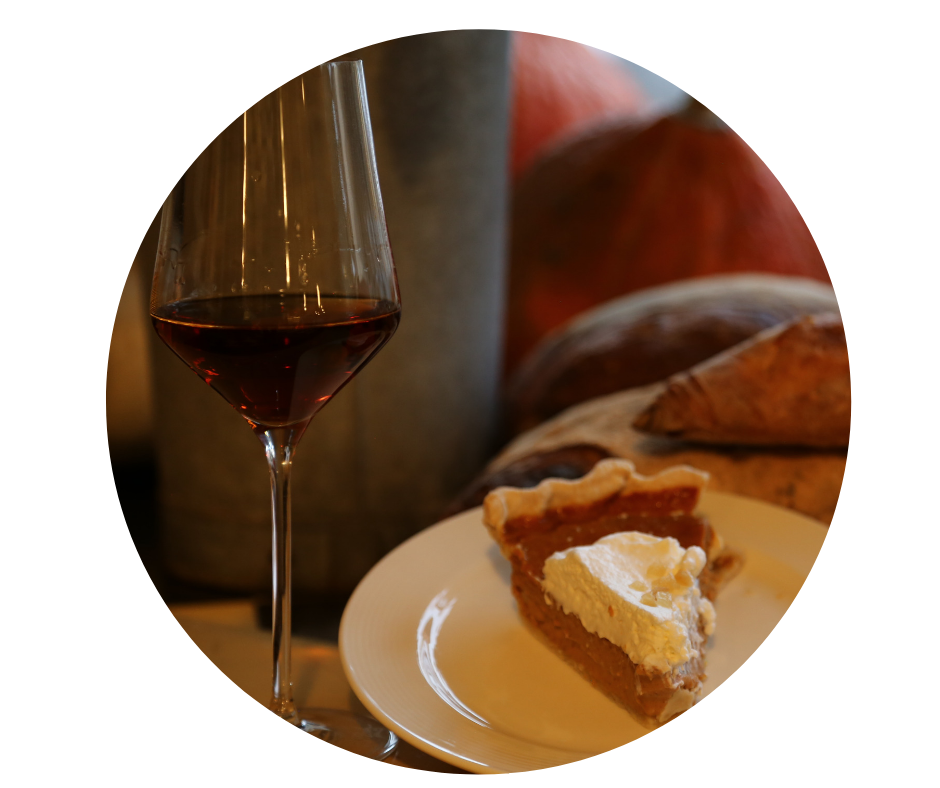Astrophysicists say that the two best states to be in are wrong or confused, because then everything around you becomes exciting and open to discovery.
I was thinking about this gem of an idea the other day while staring at a bottle of Madeira, one of the most exciting wines in the world—and, today, quite open to discovery. Ironically, historically, the wine was once the single most popular wine in the Unites States.
Before I explain how that could be, let me say that next week is the time to reacquaint yourself with Madeira’s exquisite delicious—AND with its ability to be the best thing you’ll ever drink with pumpkin pie. (Recommendations for great Madeiras are at the end of this blog).
Needless to say, pumpkin pie is sweet … but it’s also more than that. It’s savory and earthy and a little bit spicy. It needs a wine of complexity and energy—a wine that’s also more than just sweet. Madeira is long and vivid with a subtle spiciness, hints of dried orange peel, toffee, caramel, and vanilla, plus a rich nutty sappiness in the middle. With age, it can be mind-bendingly delicious. After tasting it once, no one falls out of love with Madeira.
Drunk by the founding fathers during the signing of the Declaration of Independence, Madeira was also what Francis Scott Keyes sipped as he composed the Star-Spangled Banner. Everyone from George Washington to Thomas Jefferson, Benjamin Franklin, and John Adams drank copious amounts. Indeed, among the 18th century colonial well-to-do, Madeira “parties” were the forerunners of the American cocktail party.
That’s the big picture. But let’s telescope down a bit.
Madeira is fortified, oxidized, and maderized. The best are aged twenty years up to two hundred years before they are released. Here, very briefly, is Madeira’s story.
The wine Madeira comes from a small cluster of volcanic islands, the largest and most important of which is also called Madeira. Although the islands are geographically part of Africa (about 300 miles off the Moroccan coast), they are nonetheless a province of Portugal, some 600 miles to the northeast.
The wine—which can be bone dry or opulently sweet—starts out much as any other wine. The grapes are harvested and fermented. Then, brandy is added to halt the fermentation and, possibly, leave some natural sweetness. Next, stunningly, the Madeira-to-be is heated (maderized)—either in specially designed tanks or, traditionally, in casks in hot attics. The wine reaches about 130 degrees Fahrenheit and remains at that temperature for months, years, or even many decades. Importantly, the casks are not filled to the brim. The combination of time, heat, and oxygen has a superb mellowing effect on the wine, creating an inimitable velvety texture and complex, hedonic flavor.
But the Madeira isn’t quite done yet. After it’s allowed to cool and rest, a Madeira is then aged for potentially another twenty years, often in casks made from different woods—American oak, chestnut, Brazilian satinwood, even mahogany. Ultimately, the wine will be blended, sometimes with Madeiras of other years (which is why Madeira usually carries no vintage date).
At this point the flavor is off-the-charts delicious. (Who wouldn’t have been inspired to write the Declaration of Independence?) Of course, the logical time to see for yourself is now. Not only is pumpkin pie a favorite pairing, but even without the pie, a cold, dark November night is exactly the right emotional context for a wine that has no equal.
You’ll see.
The Main Styles of Madeira:
Sercial: The driest style—tangy, elegant Madeiras with a bracing grip and dry nutskin flavors.
Verdelho: The medium-dry style—exquisitely balanced and somewhat more full-bodied than sercials.
Bual: A rare, medium-rich style (sometimes spelled boal)—concentrated with sweet richness. Historically, a favorite in English officers’ clubs in India.
Malmsey: The richest, sweetest style—Madeiras of astonishing richness.
Some Madeiras to Try:
There are several top Madeira firms, among them: Rare Wine Company, Barbeito, D’Oliveira, Blandy’s, and Broadbent. Here are several amazing examples, from least expensive to most:
THE RARE WINE COMPANY Historic Series “New York Malmsey” Madeira (Madeira, Portugal) $50
RWC’s “New York Malmsey” is nothing short of sublime. Languorous on the palate, it has an ethereal plushness yet it’s elegant at the same time. Drinking it is like being wrapped in cashmere blankets. Although sweet, it is not one wit sugary. Lovely toffee, vanilla, exotic spice, and roasted nut flavors. 95 points
BLANDY’S 1999 Malmsey Colheita Madeira (Madeira, Portugal) $55 for the 500-milliliter bottle
Colheita (col-YATE-ah) is a term sometimes used for a Madeira from a single vintage. This wine’s pipe tobacco and woody notes give it a rustic dryness but, after a few seconds, a wonderful creamy lushness shows through. Sweet, but not saccharin, it’s texture is utterly supple. 92 points
D’OLIVEIRA Bual 1968 Madeira (Madeira Portugal) $300
With its arching, nearly writhing richness, this Bual, entirely from the 1968 vintage, almost seems alive even though it’s 50 years old. Sublime, light, and lifted, it’s nonetheless packed with hints of exotic spice, tea, orange peel, vanilla bean, toffee and above all, roasted nuts—all of which are swirled together in a stunning kaleidoscope of flavor. 98 points
BARBEITO 1891 Bual “Ribero Real” Madeira (Madeira, Portugal) $950
Yes, the price and vintage are right. What’s stunning is that this almost 130-year old wine is available (via Rare Wine Company)—and it’s mind-blowing. After its century-plus of aging, the wine is reduced to almost atomically dense elements. The richness is primordial (there is no other way to describe it), and it pulls you deep down into the wine. I swear that one sip lasts a half hour. The length is unreal. Sweet but then again not at all sweet, this Bual is better described as astonishingly complex. 100 points

